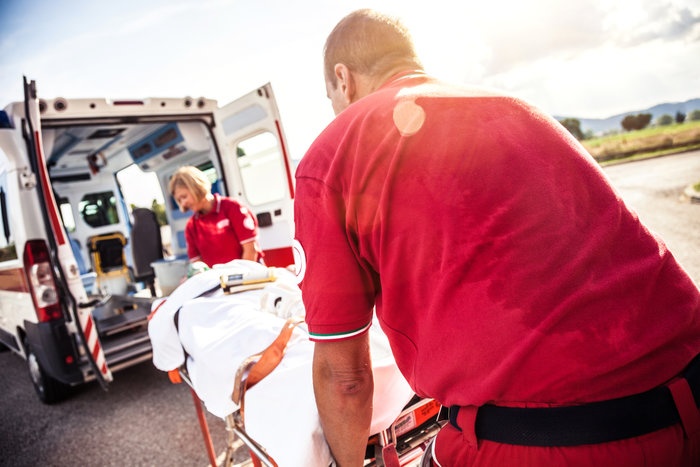 Respiratory emergencies are some of the most critical cases you will encounter. Every second counts, so you had better be ready. Recognizing a patient in distress, treating him or her immediately, and transferring him or her to an appropriate facility are some of the ways you can help improve patient outcomes, but there are other concerns that you as a medic must keep in mind. Here are three of them:
Respiratory emergencies are some of the most critical cases you will encounter. Every second counts, so you had better be ready. Recognizing a patient in distress, treating him or her immediately, and transferring him or her to an appropriate facility are some of the ways you can help improve patient outcomes, but there are other concerns that you as a medic must keep in mind. Here are three of them:
1. The Dangers of Aspiration
We are all familiar with the dangers of aspiration and the deadly toll it can take on a patient, especially those with preexisting conditions. Aspiration diminishes gas exchange, leading to hypoxia; it can cause sepsis, especially in the elderly; and can eventually result in respiratory failure and death. Especially concerning is the risk of aspiration pneumonitis, caused by stomach contents entering the tracheobronchial tree, which carries a 70 percent mortality rate.1
One of your primary responsibilities during a respiratory emergency is to prevent aspiration. Here are a few ways you can achieve this:
- Secure the airway: Don’t get distracted, especially in the case of trauma.
- Monitor your patient: Watch for signs of deterioration and continually reassess.
- Be proactive: If you think the airway may become compromised, secure it!
2. The Difference You Can Make
As a paramedic, what you do, both on scene and off, can make a big difference in patient outcomes. A successful outcome depends on your experience and proficiency at recognizing, treating, and correcting respiratory emergencies. Intubation success rates can be improved through careful analysis and continuing education.2 You owe it to your patients to be the best you can be. Here are a few considerations:
- On Scene
- Recognize: Know the signs and symptoms of airway compromise.
- Respond: Immediately address the compromised airway and treat accordingly.
- Be ready: Have ALL the necessary equipment on hand to treat ANY type of respiratory emergency.
- Off Scene
- Train: Stay up on new information and practice your skills to remain proficient.
- Teach: One of the best ways to improve proficiency is to teach in your field.
- Tutor: Mentor newer members in your department and let them learn from your experience.
3. Suction Is Key
The outcome of respiratory emergencies can be dramatically enhanced through the application of effective oral suctioning. Keeping the airway clear not only allows oxygenation of the patient, but provides the necessary visibility for you to perform endotracheal suctioning. You can’t pass a tube through the cords if you can’t visualize the cords, so be sure to ALWAYS have your portable suction unit on hand at any respiratory emergency. Here are a few tips:
- Take the suction: Incorporate your suction unit into your ALS assemblage.
- Use the suction: Relegate someone to suction the airway as you attempt to intubate.3
- Maintain the suction
- Check the unit at the start of each shift.
- Keep it clean and disinfected.
- Keep a selection of catheters on hand.
Respiratory emergencies come in many forms, and you must be prepared for all of them. So, take the appropriate steps to ensure your readiness. Your patients will thank you.
1 2009, Limmer, D., J. Mistovich, and W. Krost
Beyond The Basics: Four Fatal Pulmonary Problems, EMS World online, http://www.emsworld.com/article/10320680/beyond-the-basics-four-fatal-pulmonary-problems
2,3 2015, Gerecht, R. and C. Brainard
Overview of Prehospital Airway Suctioning, JEMS online, http://www.jems.com//articles/print/volume-40/issue-8/features/overview-of-prehospital-airway-suctioning.html














